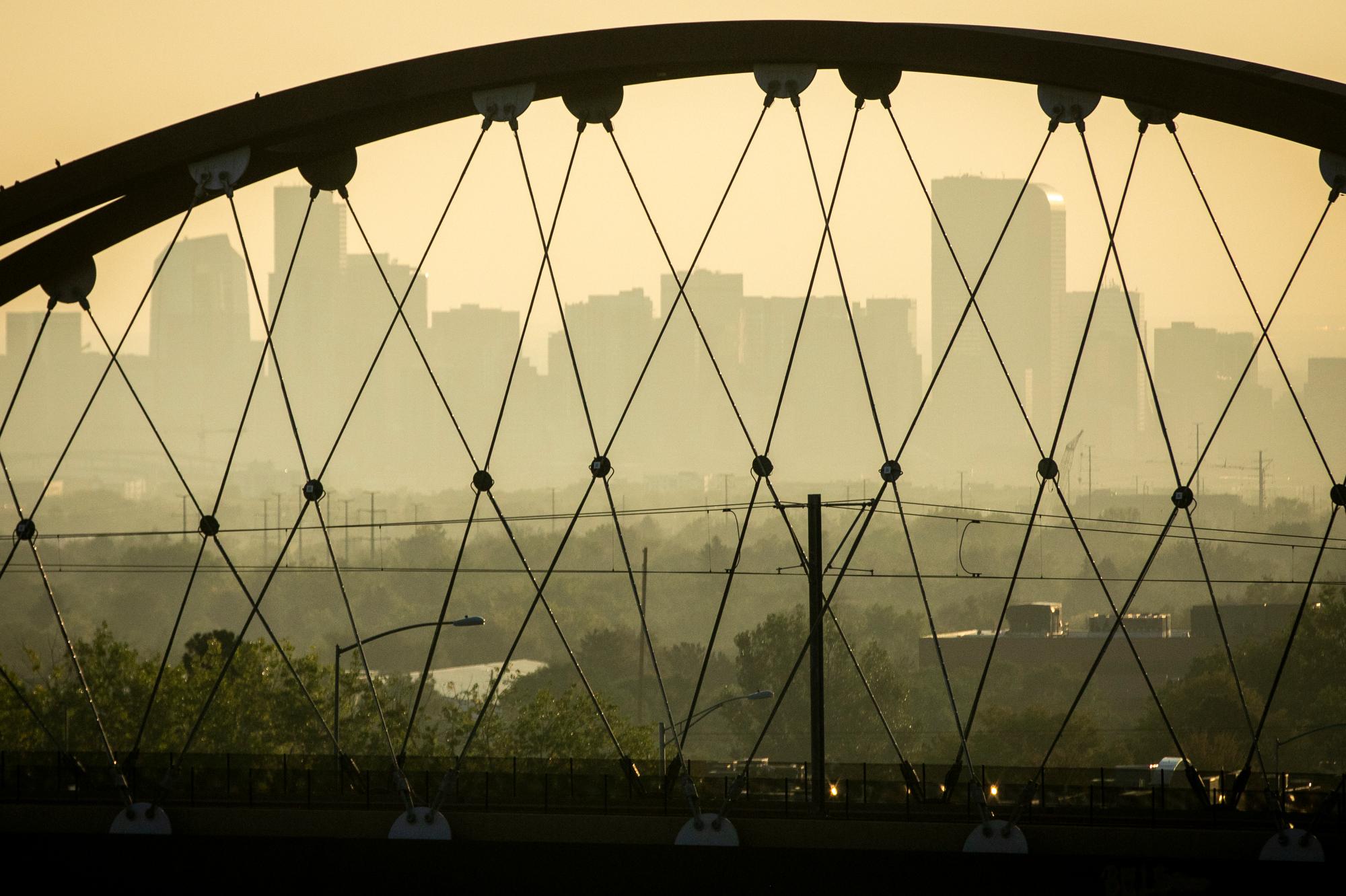
The Front Range appears to be headed toward a record summer for ozone pollution.
After repeated inquiries about the pollutant this summer, Scott Landes, Colorado’s air quality forecaster, started compiling data from previous years. He said the relevant data starts in 2015 when the EPA lowered the national ozone standard from 75 parts per billion to 70 parts per billion. Consistent measurements above the standard trigger an Ozone Action Alert from the state.
In 2018, Landes said his office issued 52 alerts, setting the high-water mark for the Front Range. It’s issued 38 so far this year and appears on track to set a new record before the summer ozone season ends on Aug. 31.
Possibly more remarkable is the consistency of the problem over the last month. State air authorities have issued ozone warnings for the Front Range every day since July 5, marking 25 days when the pollutant hit levels considered unhealthy for sensitive groups like children and older adults. Some days have surpassed levels considered unhealthy for everyone.
The streak has renewed concerns about ozone pollution. Anthony Gerber, a pulmonologist at National Jewish Health and the chair of the Colorado Air Quality Control Commission, said brief exposure to high ozone levels can cause lung inflammation. While the condition can be deadly for people with respiratory conditions, it subsides in healthy people once the air clears.
Gerber said day after day of unrelenting ozone pollution is a different story.
“It’s a little like wearing a bad pair of shoes. Some people might get a blister and it’s going to heal, but if you wear a bad-fitting pair of shoes for years, some people are going to get bunions,” Gerber said.
Non-stop ozone can increase the risk of dying from heart and lung diseases, and can decrease birth weights.
Recent research has underscored the consequences of an unrelenting dose of ozone. The potential consequences are far worse than bunions.
A 2019 study compared long-term average ozone exposure with federal mortality data. It found breathing in more of the pollutant appeared to increase the risk of dying from heart and lung diseases. Other research found people living in areas with high ozone pollution are more likely to develop acute respiratory distress syndrome, a severe condition where the lungs fill with fluid.
Another California study looked into the effect on pregnancies. It found birth weights decreased about 1.7 ounces pounds for every 12 part per billion increase in average ozone levels.
A critical review of multiple studies on long-term ozone pollution found exact consequences of prolonged ozone pollution aren’t entirely clear. For example, it found scientists had not clearly linked the problem with asthma development in children, but it appears to increase the risk of adult-onset asthma in men.
Gerber said those scientific limitations should not come as a surprise. It’s comparatively easy to find the short-term effects of ozone levels on emergency room visits, but it’s far harder to measure the impact of pollution over decades.
“The fact they have found any risk is actually remarkable because you can imagine the complexity of these studies,” Gerber said.
Ozone needs heat and sunlight to form, so cooler and cloudier days are also ozone-lite days.
In the short term, it appears some relief is headed to the Front Range. Frank Flocke, an atmospheric scientist at the National Center for Atmospheric Research, said a cold front appears to be headed toward the Front Range this weekend.
The shift in weather will likely take away one of the critical ingredients for ozone. Unlike more direct pollutants, the pollutant forms in the atmosphere from volatile organic compounds and nitrogen oxides. Heat and sunlight spur the reaction.
With cooler weather and cloud cover, the Front Range will likely get a break from its streak of high ozone days, but possibly not for long.
The oil and gas industry, wildfire smoke and emissions from cars all contribute to ozone.
Last year, Flocke recently completed an analysis of fieldwork his office conducted in 2014. The Front Range Air Pollution and Photochemical Experiment, dubbed FRAPPE, used aircraft and other methods to measure the leading causes of summertime ozone in the region.
It found transportation and oil and gas were the largest contributors to the overall problem. Wildfire smoke also contains many compounds that can fuel ozone creation.
While the petroleum industry has reduced its emissions, Flocke said plenty of people are still driving around the Front Range. In fact, state data compiled by Flocke shows Interstate 25 traffic levels have surpassed their pre-pandemic levels.
“If we want to do something about our air quality, we have to consider things like that,” Flocke said.
Until then, he said people in the Front Range should expect the ozone pollution streaks to continue.








